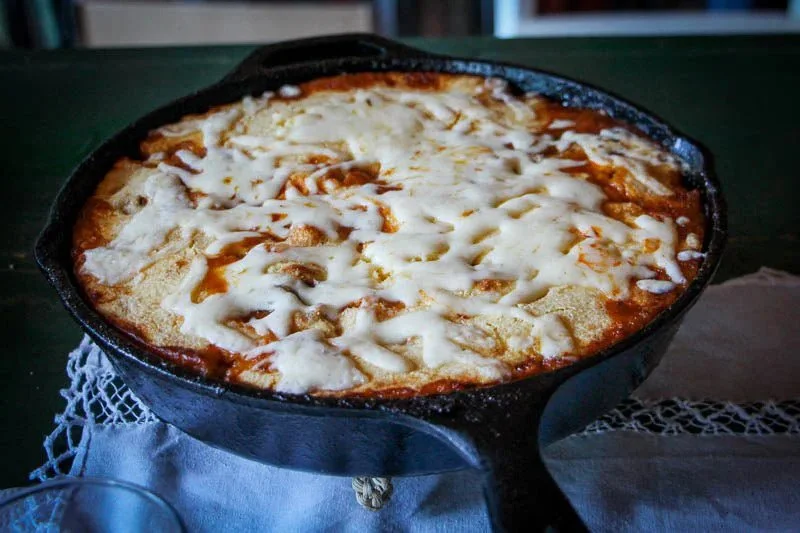 Image 1 of 3
Image 1 of 3

 Image 2 of 3
Image 2 of 3

 Image 3 of 3
Image 3 of 3




Rio Zape
Buy now
We've teamed up with Hodmedod on shipping of our orders - click above to order. If you opt in to marketing when ordering you will also be subscribed to the Heirloom Bean Co newsletter.
A classic but ultra-rare heirloom bean that’s a distant relative of the Pinto, with a unique flavour profile carrying hints of chocolate and coffee
The taste and velvety texture of this beautiful rarity should make Rio Zapes one of your first forays into the heirloom world. Their back story is suitably remarkable. In 1935, Rio Zape beans (also known as Hopi String beans), were discovered in the Ancestral Pueblo cliff dwellings of the Zuni Pueblo in New Mexico. Then, in the 1960s, archaeologists found them in the excavation of a sealed tomb in Rio Zape, Durango, Mexico. It's believed that these beans were sealed in the tomb around 600 AD. A gorgeous bean with a mysterious history!
KITCHEN SUGGESTIONS
Pot beans, soup, dips, refried beans, casseroles - all the versatility of a Pinto, in an exotic, flavoursome package. Rio Zapes are denser than other Pintos, and exude a deep, hearty pot liquor. Being so rich and distinct, they won’t work with absolutely everything. In Mexico, there's a fabulous dish called enfrijoladas that uses a sauce based on puréed black beans - similar to enchiladas but with beans instead of chili sauce. This is a dish born for Rio Zapes, which also make superlative refried beans.
COOKING THESE BEANS - THE RANCHO GORDO METHOD
Check beans for debris, and rinse thoroughly. In a large pot, sauté aromatic vegetables (onions, garlic, celery, carrot etc) in olive oil. Add beans and enough water to cover by about 2 inches/5cm. Bring to a full boil for 10 to 15 minutes. Reduce heat to a gentle simmer, using a lid to help regulate the heat, and gently cook until done, 1 to 3 hours. Salt when beans start to soften. A pre-soak of 2 to 6 hours will lessen the cooking time.
Similar to: San Franciscano, Pinto, Good Mother Stallard
Latin name: Phaseolus vulgaris
Country of origin: USA
All our beans are sold in resealable 1lb (453g) bags
Images and recipes © Rancho Gordo Inc.
Buy now
We've teamed up with Hodmedod on shipping of our orders - click above to order. If you opt in to marketing when ordering you will also be subscribed to the Heirloom Bean Co newsletter.
A classic but ultra-rare heirloom bean that’s a distant relative of the Pinto, with a unique flavour profile carrying hints of chocolate and coffee
The taste and velvety texture of this beautiful rarity should make Rio Zapes one of your first forays into the heirloom world. Their back story is suitably remarkable. In 1935, Rio Zape beans (also known as Hopi String beans), were discovered in the Ancestral Pueblo cliff dwellings of the Zuni Pueblo in New Mexico. Then, in the 1960s, archaeologists found them in the excavation of a sealed tomb in Rio Zape, Durango, Mexico. It's believed that these beans were sealed in the tomb around 600 AD. A gorgeous bean with a mysterious history!
KITCHEN SUGGESTIONS
Pot beans, soup, dips, refried beans, casseroles - all the versatility of a Pinto, in an exotic, flavoursome package. Rio Zapes are denser than other Pintos, and exude a deep, hearty pot liquor. Being so rich and distinct, they won’t work with absolutely everything. In Mexico, there's a fabulous dish called enfrijoladas that uses a sauce based on puréed black beans - similar to enchiladas but with beans instead of chili sauce. This is a dish born for Rio Zapes, which also make superlative refried beans.
COOKING THESE BEANS - THE RANCHO GORDO METHOD
Check beans for debris, and rinse thoroughly. In a large pot, sauté aromatic vegetables (onions, garlic, celery, carrot etc) in olive oil. Add beans and enough water to cover by about 2 inches/5cm. Bring to a full boil for 10 to 15 minutes. Reduce heat to a gentle simmer, using a lid to help regulate the heat, and gently cook until done, 1 to 3 hours. Salt when beans start to soften. A pre-soak of 2 to 6 hours will lessen the cooking time.
Similar to: San Franciscano, Pinto, Good Mother Stallard
Latin name: Phaseolus vulgaris
Country of origin: USA
All our beans are sold in resealable 1lb (453g) bags
Images and recipes © Rancho Gordo Inc.
RIO ZAPE RECIPES
